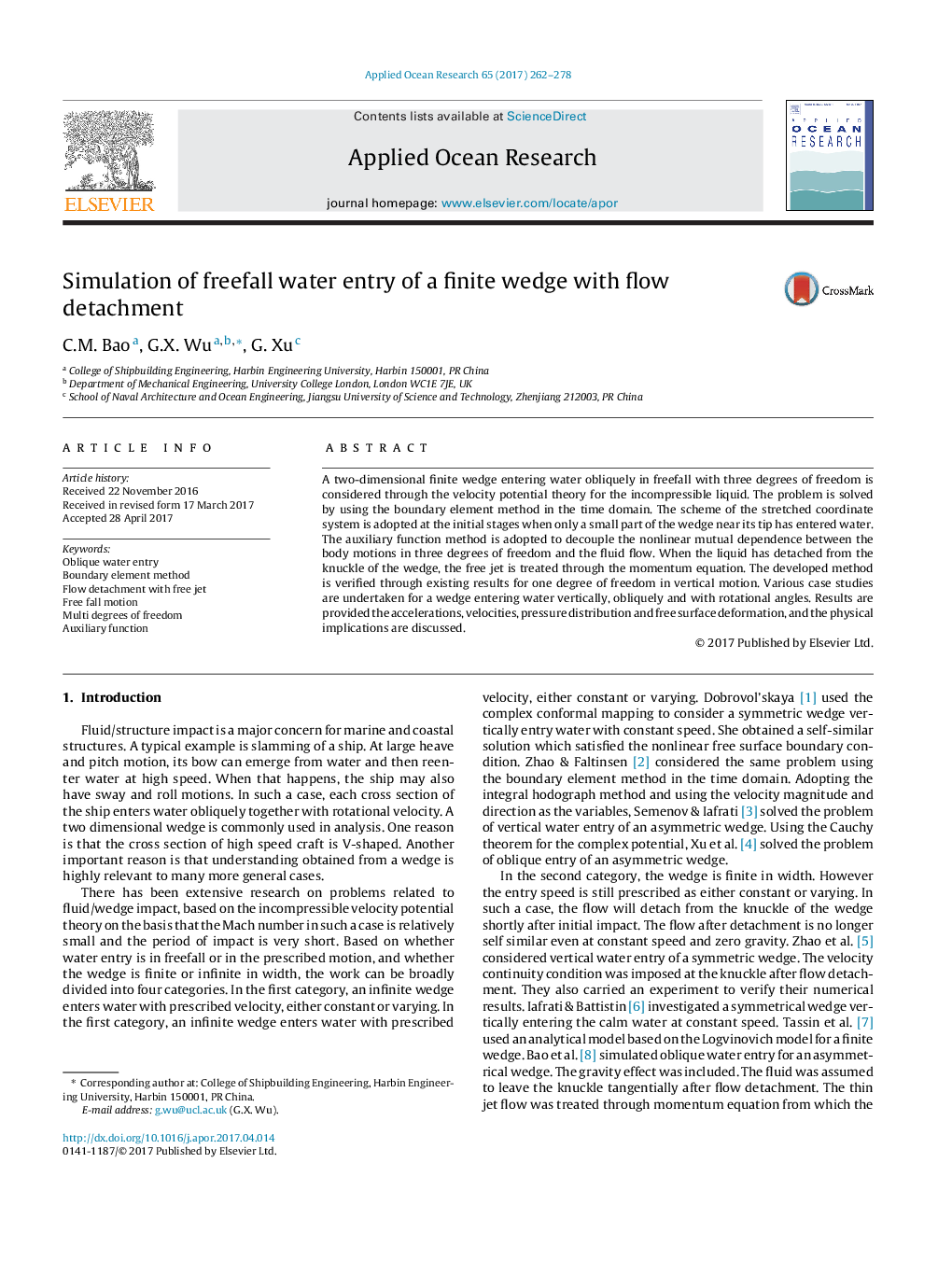| Article ID | Journal | Published Year | Pages | File Type |
|---|---|---|---|---|
| 5473316 | Applied Ocean Research | 2017 | 17 Pages |
Abstract
A two-dimensional finite wedge entering water obliquely in freefall with three degrees of freedom is considered through the velocity potential theory for the incompressible liquid. The problem is solved by using the boundary element method in the time domain. The scheme of the stretched coordinate system is adopted at the initial stages when only a small part of the wedge near its tip has entered water. The auxiliary function method is adopted to decouple the nonlinear mutual dependence between the body motions in three degrees of freedom and the fluid flow. When the liquid has detached from the knuckle of the wedge, the free jet is treated through the momentum equation. The developed method is verified through existing results for one degree of freedom in vertical motion. Various case studies are undertaken for a wedge entering water vertically, obliquely and with rotational angles. Results are provided the accelerations, velocities, pressure distribution and free surface deformation, and the physical implications are discussed.
Related Topics
Physical Sciences and Engineering
Engineering
Ocean Engineering
Authors
C.M. Bao, G.X. Wu, G. Xu,
